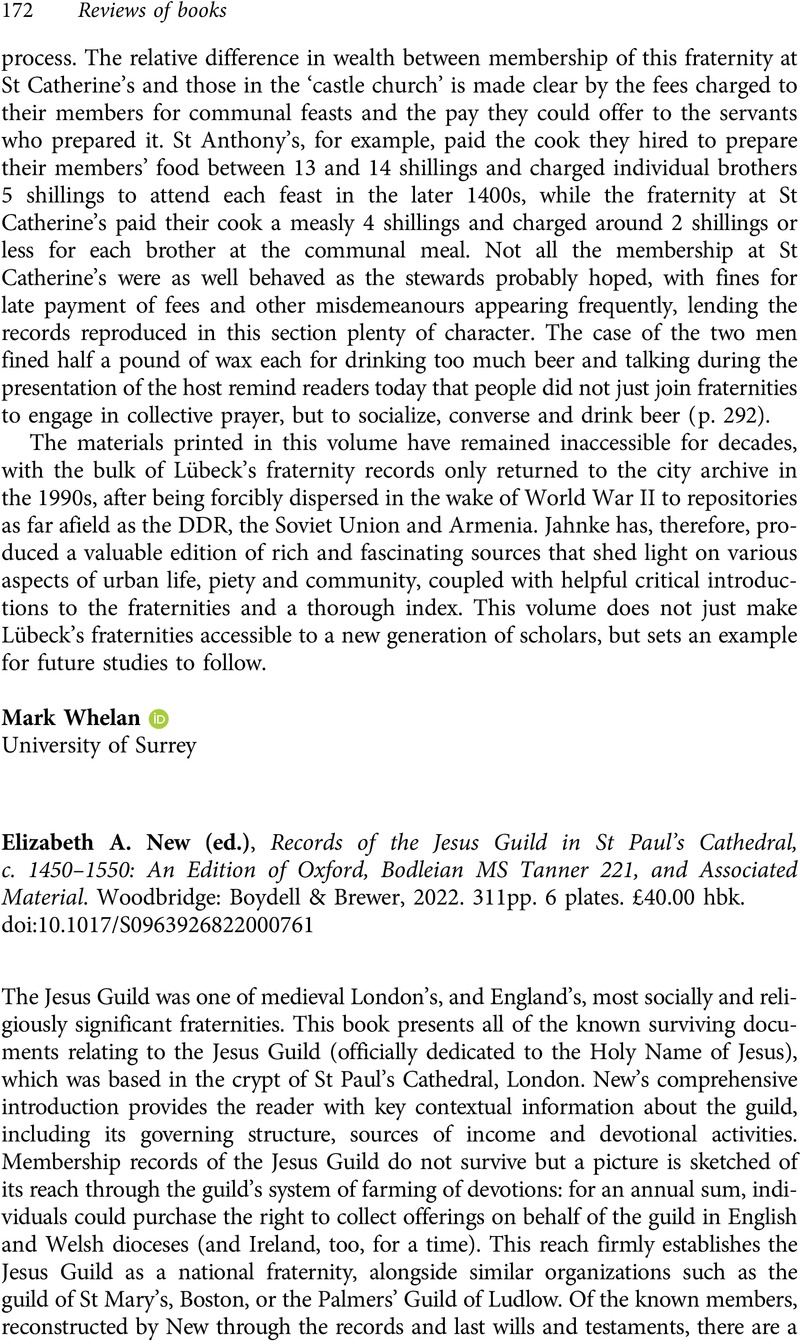No CrossRef data available.
Article contents
Elizabeth A. New (ed.), Records of the Jesus Guild in St Paul's Cathedral, c. 1450–1550: An Edition of Oxford, Bodleian MS Tanner 221, and Associated Material. Woodbridge: Boydell & Brewer, 2022. 311pp. 6 plates. £40.00 hbk.
Review products
Elizabeth A. New (ed.), Records of the Jesus Guild in St Paul's Cathedral, c. 1450–1550: An Edition of Oxford, Bodleian MS Tanner 221, and Associated Material. Woodbridge: Boydell & Brewer, 2022. 311pp. 6 plates. £40.00 hbk.
Published online by Cambridge University Press: 27 January 2023
Abstract
An abstract is not available for this content so a preview has been provided. Please use the Get access link above for information on how to access this content.

- Type
- Review of Books
- Information
- Copyright
- Copyright © The Author(s), 2023. Published by Cambridge University Press.



